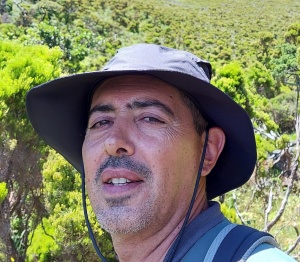Arthropods and other biota associated with the Azorean trees and shrubs: Laurus azorica (Seub) Franco (Magnoliophyta, Magnoliopsida, Laurales, Lauraceae)
- Articles in SCI Journals
- May, 2022
Tsafack, N., Gabriel, R., Elias, R.B., Boieiro, M., Ferreira, M.T. & Borges, P.A.V. (2022) Arthropods and other biota associated with the Azorean trees and shrubs: Laurus azorica (Seub) Franco (Magnoliophyta, Magnoliopsida, Laurales, Lauraceae).
Biodiversity Data Journal,
10, e80088. DOI:10.3897/BDJ.10.e80088 (IF2022 1,3; Q3 Biodiversity Conservation)
Summary:
This study explores the composition and structure of species communities associated with the native Azorean tree species Laurus azorica (Seub) Franco (Magnoliophyta, Magnoliopsida, Laurales, Lauraceae). Communities were sampled in six Islands covering the occidental (Flores), central (Faial, Pico, Terceira) and eastern (São Miguel, Santa Maria) groups of Azores Archipelago during the BALA project, using standardised sampling protocols for surveying canopy arthropod fauna. In addition, the study characterises the distribution of species regarding their colonisation status and feeding modes and, finally, compares communities of different Islands.
Ninety-four arthropod species totalling 10,313 specimens were collected on L. azorica. The Arthropod community was dominated by Hemiptera species, most of them being herbivores. Endemic and native species showed a very high abundance representing about 94% of the total species abundance. However, despite introduced species being represented by few individuals (6% of the total abundance), their diversity was remarkable (28 species and no significant difference with diversity found in endemic and native species communities). Analysis of rarity patterns revealed a stable community of endemic species (alpha gambin SAD model approaching a log-normal shape), intermediate stable community of native species (alpha SAD gambin model approaching a poisson log-normal) and a less stable community of introduced species (alpha SAD gambin model approaching a log-series shape). A dissimilarity analysis revealed high similarity between communities of Terceira and Pico and high dissimilarity between Flores and Faial communities. We observed a clear individualisation of the different islands when considering endemic species, whereas we observed high overlap when considering native and introduced species groups. Canopy community distribution confirms the results obtained in a previous study which suggest the stability of native and endemic arthropods species communities over introduced species community in native forests fragments.
Arthropod species were richer than bryophytes, lichens and vascular plants species. We found that L. azorica serve as the substrate for very few vascular plants species (four epiphytes species), which were present in all Islands, except Elaphoglossum semicylindricum, which does not occur in Santa Maria. L. azorica shelters a significant number of bryophytes and lichens species. Thirty-two lichens and 92 bryophyte species, including 57 liverworts and 35 mosses, are referred to this phorophyte. Five bryophyte species, all Azorean endemics, are considered Endangered by IUCN Criteria. L. azorica harbours a poor community of epiphyte vascular plant species and all of them were ferns, but the community of bryophytes and lichens are not negligible although very low compared to the community found on other previously studied Azorean trees, the Azorean cedar Juniperus brevifolia.
The present study shows that most islands present particular species distribution patterns without geographical correlation and that conservation programmes should be adapted to each Island. The study, therefore, calls for a specialisation of conservation programmes for each of the Islands.
https://bdj.pensoft.net/article/80088/






